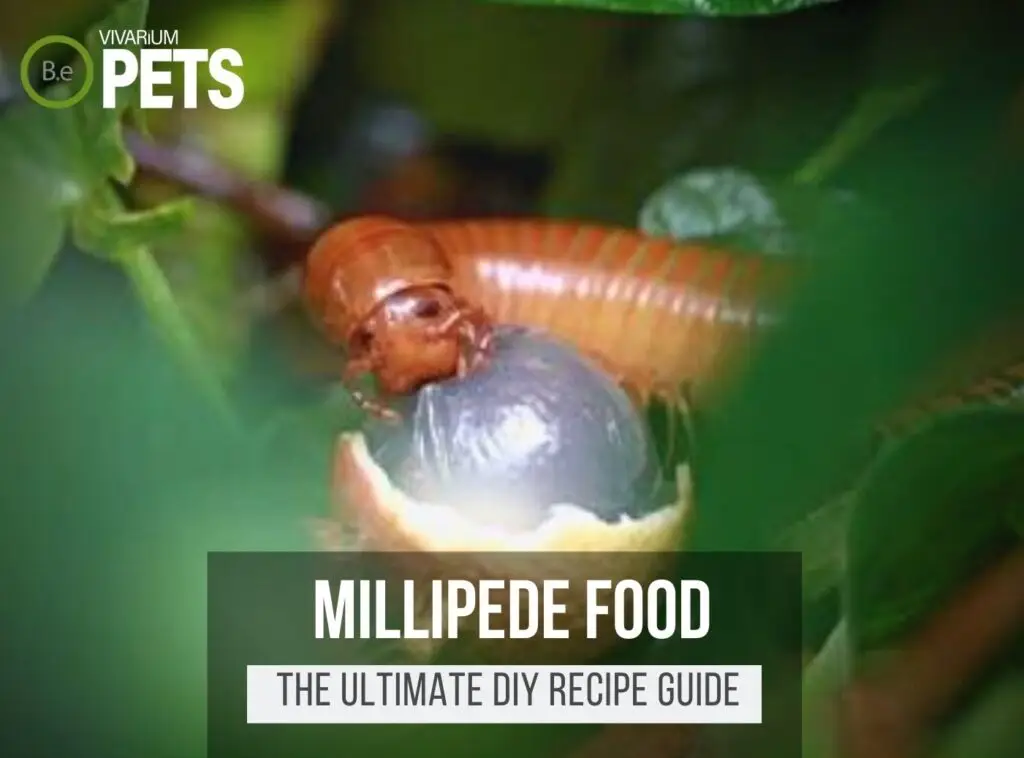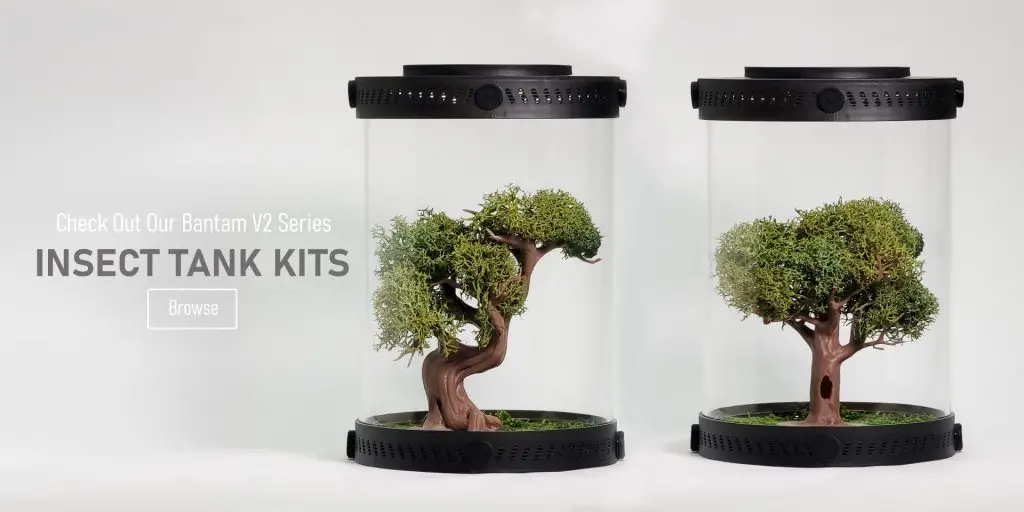Hello world, this is the ultimate guide to caring for Desert Millipedes (Orthoporus ornatus)!
Giant Millipedes are unique and interesting creatures, with the Orthoporus ornatus known best for its particular habitat preferences.
In this guide, we’ll tell you everything you need to know about keeping this species.
We’ll cover topics ranging from what to expect when adopting one to feeding, breeding, and health.
So, let’s dive in!
Table Of Contents:
ToggleWhat Are Desert Millipedes?
Orthoporus ornatus belongs to the Family Spirostreptidae and can be found in deserts around the globe.
Its common English name “Desert Millipede” comes from its typical habitat, where this species of millipede often hides within desert soils and plant matter.
Other common names include Sonoran Desert Millipede and Giant Gold Millipede for obvious reasons.
Create an ideal habitat for your millipede with our Customizable Millipede Enclosure Kits, which include everything you need to get started.
What Do Desert Millipedes Look Like?
An adult Desert Millipede can grow to be around 9 inches long, with a cylindrical shape, and feature dozens of body segments, each one with two pairs of legs.
They are usually tannish red or brown and may have patterns or spots on their exoskeleton, depending on their environment.
Desert millipedes rely heavily on their antennae for both sensing and communication.
They can detect vibrations and faint odors in the air around them.
Their exoskeleton protects predators and the environment, yet is flexible enough to allow them to curl up when threatened.
Benefits Of Using Desert Millipedes
Desert millipedes are a great addition to vivariums due to their adaptability to various climates.
This millipede species is known to inhabit tropical, arid, and desert environments, allowing tank keepers to create an immersive and diverse environment.
This species is also relatively docile and non-aggressive, making them an ideal housemate for other creatures in an enclosure.
Additionally, an Orthoporus ornatus is also beneficial for its cleaning duties in the terrarium, helping to reduce the growth of mold and bacteria.


Desert Millipede Facts
Orthoporus ornatus are solitary animals that can grow to be some of the largest millipedes found in the Americas.
They live in desert and arid environments, and feed on decaying vegetation and insects, with nocturnal and timid temperaments.
The average lifespan of the species is also one of the longest when compared to other millipedes, and they reproduce by laying eggs in damp soil with survival help excretions.
Habitat
Orthoporus ornatus are native to the desert regions of the United States, including Arizona, New Mexico, Texas, and California.
They live in hot and dry areas including sandy deserts and rocky foothills.
Desert Millipedes are nocturnal, retreating to burrows or rock cracks during the day and coming out to forage for food at night.
Although they are slow-moving, they have adapted to living in a desert ecosystem by being very difficult to find due to their adaptive coloring.
Replicate their natural habitat perfectly with our Bioactive Millipede Substrate Blend, designed to provide the ideal moisture and organic content for your millipedes.
Diet
In the wild, Orthoporus ornatus feed mostly on decaying plant and animal matter, helping keep the desert environment healthy and clean.
This species is nocturnal, so they spend their days hiding in cool, damp spots and come out to forage for food at night.
When foraging for food, these millipedes seek out dead or decaying vegetation such as cacti or leaves, as well as small insects or worms.
They also consume the feces of other animals as a source of minerals.
Temperament
The Desert Millipedes are generally a calm and non-aggressive species.
Since they are non-venomous, they can be safely handled and interact with humans.
Care should still be taken due to their hard exoskeleton, as light handling could injure or distress them.
They are also generally social creatures, so they can be kept with other millipede species in larger enclosures.
When interacting with other animals, Orthoporus ornatus should only be kept with ones that will not attempt to injure them, such as insects and other arthropods.
It is important to monitor the interactions between two different species, as fights may occur, which could lead to potential harm.
Lifespan
Orthoporus ornatus have a relatively long lifespan of around 10 years.
As with many other species of arthropods, the Desert Millipedes complete their life cycle in multiple stages; egg, larva, juvenile, and adult.
The Desert Millipede has a relatively fast development rate, reaching adulthood within a year at most.
In ideal conditions, the eggs may hatch within a week or two.
From there, the larvae will molt several times, each time shedding its skin to reveal a more developed form, until reaching adulthood.
They then begin their adult life, looking for a mate, breeding, and continuing the cycle.
Breeding
When it comes to mating and reproduction, the Desert Millipede follows a quite similar pattern to other millipedes of its family.
Mating for the millipede usually happens between Spring and Summer when the weather is milder and the nights are longer.
Males can be distinguished easily; they are the larger of the two and have the longest antennae.
On the other hand, female Desert Millipedes have shorter antennae and broader bodies.
Where To Find Desert Millipedes
Finding Orthoporus ornatus in the wild can be a challenging task.
They prefer habitats lying at higher altitudes, and areas with sparse vegetation and low humidity levels, presumably to avoid predators.
If you’re interested in adopting a Desert Millipede, it’s best to purchase one or multiple from a local pet store or breeding species.
It’s important to be careful when purchasing live animals online — make sure the vendor you are purchasing from is reputable.
Desert Millipede Care
The key to successfully caring for Orthoporus ornatus is creating the right environment for them.
This includes providing an appropriate enclosure, with the right temperature, humidity, and substrate.
Feeding should include a mix of foods, depending on the age and size of the millipede.
Properly interacting with and handling the millipede is also necessary.
Finally, monitoring the millipede’s health is essential to keeping it healthy and happy.
Tank Requirements
If you plan to adopt an O. ornatus, you’ll need to make sure that the tank requirements are just right.
A 10-15 gallon tank is suitable for keeping this species, with the best vivarium type being a semi-arid terrarium setup.
To mimic the species’ natural habitat, provide them with an environment with a slightly acidic pH between 6.6-7.6, hardness of 75-150ppm, and temperature between 28-30°C.
A terrarium soil that’s moist like coconut fiber, peat moss, or vermiculite, and a low level of terrarium lighting are also factors to replicate.
These conditions will ensure that your Orthoporus ornatus is serviced with everything it needs to thrive in its climatic needs.
What Do Desert Millipedes Eat?
One of the most important aspects of caring for a Desert Millipede is making sure they receive the proper nutrition.
Here are some tips on how to feed them:
- Feed your millipede a variety of plant-based foods, including fresh fruits and vegetables, as well as plant matter such as leaves and grass.
- Make sure the food items are not too big or too hard for them to consume.
- You can also offer them commercial-grade insect feed, such as crickets or mealworms.
- Provide your millipede with plenty of water, ensuring that their water dish is always filled to the brim.
- Make sure to clean and replenish their food and water dishes every three days.
Here is a list of things you can feed Orthoporus ornatus:
- Carrots
- Apples
- Spinach
- Kale
- Sweet Potatoes
- Beet Greens
- Lettuce
- Celery
- Crickets
- Mealworms
- Shredded Cabbage
If you’re more of an avid hobbyist like myself, check out my ultimate DIY Millipede food guide. I explain the best foods and my favorite recipe in more depth.
Best Tankmates For Desert Millipedes
Millipedes, especially the Orthoporus ornatus, are very peaceful and calming creatures, making them great companions for many different tankmates.
Most millipedes are solitary creatures, so it’s best to avoid overcrowding the tank, as this may lead to stress, aggression, and fighting.
In smaller tanks, it’s best to keep only one millipede, while in larger tanks, two to three can coexist peacefully.
Good companions for arid millipedes like the Orthoporus ornatus include other slow-moving invertebrates, such as snails and isopods.
These creatures all reside at the bottom of the tank, so there’s no competition for food or resources.
Additionally, they’re relatively peaceful, making it unlikely they will cause any disruption.
Lastly, terrarium plants such as air plants and succulents can help to create a natural habitat for the Orthoporus ornatus and its tankmates.
Conclusion
That’s it! We hope this guide has been informative and has helped you understand the unique needs of the Orthoporus ornatus.
With the right habitat, food, and care, Desert Millipedes can live for many years in captivity.
Caring for them may be a bit of work, but the reward is great. Good luck and enjoy your new pet millipedes!
Create the ideal habitat for your millipedes with our species-specific soil mixes and Insect Enclosure Kits. These products provide everything you need for a successful and thriving millipede colony.
Frequently Asked Questions
Desert millipedes are detritivores that feed on decaying plant matter and occasionally consume living plant material and small insects.
They play an important role in breaking down and recycling organic matter in the ecosystem, which helps to enrich the soil and support plant growth.
The length of a Sonoran Desert millipede can vary, but on average, they range from about 4 to 6 inches (10 to 15 centimeters) in length.
However, some individuals can grow up to 9 inches (23 centimeters) long.
Desert millipedes are relatively easy to care for and require a simple setup of a moist substrate, a hiding place, and a shallow water dish.
They should be kept in a warm and dry environment with plenty of ventilation and provided with a varied diet of decaying plant matter.







